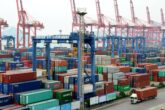
April 13, 2023
The Role of Investment Security in Addressing China’s Pursuit of Defense Technologies
Summary of Testimony
Chairman Bartholomew, Vice Chairman Wong, and Commissioners, thank you for the opportunity to provide testimony before the Commission.1 A summary of the recommendations included in this testimony is included below, followed by the supporting analysis.
In order to strengthen the ability of the U.S. government to mitigate national security risks associated with inbound and outbound investments that may contribute to China’s military modernization efforts, including its efforts to obtain foreign defense and dual-use technologies, Congress should consider the following actions.
Committee on Foreign Investment in the United States (CFIUS)
- Establish new authorities to list emerging technologies as critical technologies for the purposes of investment screening, as a limited addition to the existing FIRRMA definition of “critical technology.”
- Reduce CFIUS burden of addressing risks only indirectly related to foreign investment by passing data privacy and data security legislation.
- Strengthen the role of the Office of Legal Council to provide a check on possible CFIUS mission creep.
- Amend the Foreign Risk Review Modernization Act of 2018 (FIRRMA) to allow the Secretary of the Treasury to delegate approval authority for sharing transaction-specific information with key allies to strengthen cooperation.
Outbound investment controls
- Establish a set of outbound investment controls focused on addressing national security risks associated with China’s indigenous development of critical technologies, including notification requirements, entity-based restrictions, bright-line prohibitions on investments involving certain high-risk indigenous technology capabilities, and ultimately a sector-based screening process.
- Implement new controls through a phased approach that allows the government to build its knowledge base, expand institutional capacity, and coordinate with allies and partners.
- Establish a broad notification requirement for U.S. investments in Chinese companies making technologies that would be controlled if made in the United States, as well as a select set of other technologies that have not yet been specified on U.S. control lists.
- Establish bright-line prohibitions on U.S. investments in Chinese companies producing items that meet the technical specification of items listed on the U.S. Munitions List or for military or space purposes on the Commerce Control List.
- Expand the Chinese Military-Industrial Complex (NS-CMIC) sanctions program to include all types of investments into designated companies and to allow for designations of a broader range of entities engaged in China’s indigenous development of critical technologies.
- Implement a sector-based outbound investment screening process, starting with the semiconductor sector.
- Incorporate strong transparency and due process requirements, taking lessons learned from the CFIUS context.
- Do not implement any new authorities until a robust public consultation is conducted, including through hearings and a public comment period.
- Establish a new office under the supervision of the Assistant Secretary of the Treasury for Investment Security to coordinate a new interagency process for outbound investment authorities.
International coordination on investment security
- Fully resource the international engagement functions of the Departments of the Treasury and State.
- Create new requirements for CFIUS to assess and report to Congress on the impact of the CFIUS process on foreign investment flows from allies and partners, including an assessment of the effectiveness of the exempted foreign state authorities and the frequency and impact of mitigation agreements on investors from allies and partners.
- Encourage full use of existing fora, such as the U.S.-EU Trade and Technology Council, to coordinate export controls and investment screening policies with allies and partners.
- Pursue a broad coordination mechanism with allies and partners that would identify technologies of shared strategic importance and align export controls and investment controls authorities to protect such technologies.
Read the Full Testimony
This testimony reflects the personal views of the author alone. As a research and policy institution committed to the highest standards of organizational, intellectual, and personal integrity, the Center for a New American Security (CNAS) maintains strict intellectual independence and sole editorial direction and control over its ideas, projects, publications, events, and other research activities. CNAS does not take institutional positions on policy issues and the content of CNAS publications reflects the views of their authors alone. In keeping with its mission and values, CNAS does not engage in lobbying activity and complies fully with all applicable federal, state, and local laws. CNAS will not engage in any representational activities or advocacy on behalf of any entities or interests and, to the extent that the Center accepts funding from non-U.S. sources, its activities will be limited to bona fide scholastic, academic, and research-related activities, consistent with applicable federal law. The Center publicly acknowledges on its website annually all donors who contribute. The author would like to acknowledge Tim Fist, Martijn Rasser, and the CNAS artificial intelligence team for their collaboration during the preparation of this testimony, as well as Sarah Bauerle Danzman for her intellectual contributions to the recommendations related to outbound investment authorities, many of which were previously discussed in “Sand in the Silicon: Designing an Outbound Investment Controls Mechanism” jointly published by CNAS and the Atlantic Council.
More from CNAS
-
Tariffs and Tech: An Uncertain Recipe
Higher tariffs could prompt American cloud companies to shift more of their capital investments abroad....
By Pablo Chavez
-
Trump Tariffs: How Will U.S. Plans Reshape the Global Economy?
Donald Trump says he's already decided the tariffs he will impose on countries that export goods to America, including the United Kingdom. Channel 4 hears from Emily Kilcrease...
By Emily Kilcrease
-
Edward Fishman on the Age of Economic Warfare
In the latest episode of the Sanctions Space Podcast, Justine is joined by Edward Fishman, author of Chokepoints: American Power in the Age of Economic Warfare and an adjunct ...
By Edward Fishman
-
The World Has Changed Since Trump’s First Trade War. Other Countries Are Ready to Fight Back.
With so many countries armed and ready, the challenge for Trump will be to use economic weapons to advance U.S. interests without leaving America isolated or ruining the world...
By Edward Fishman




